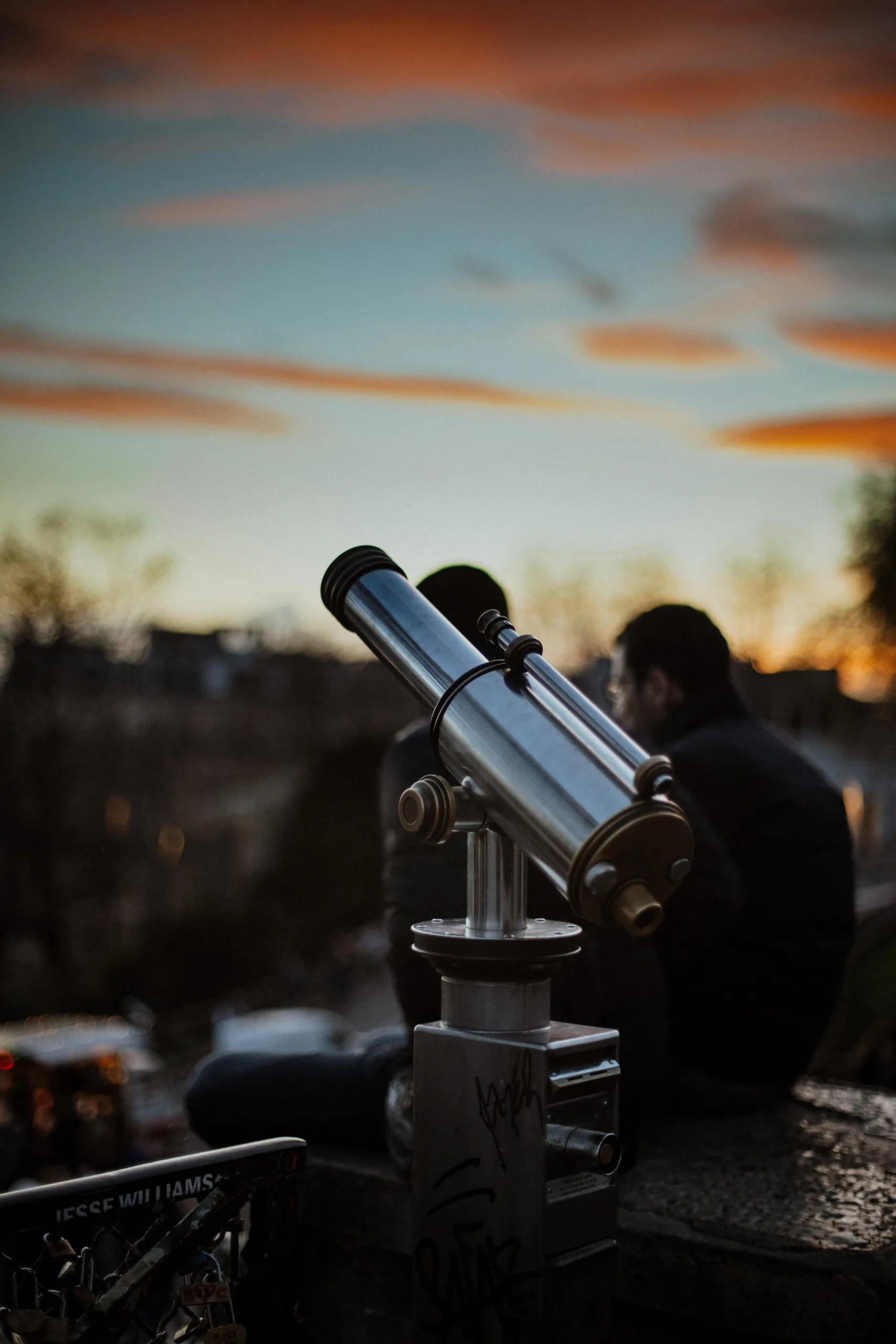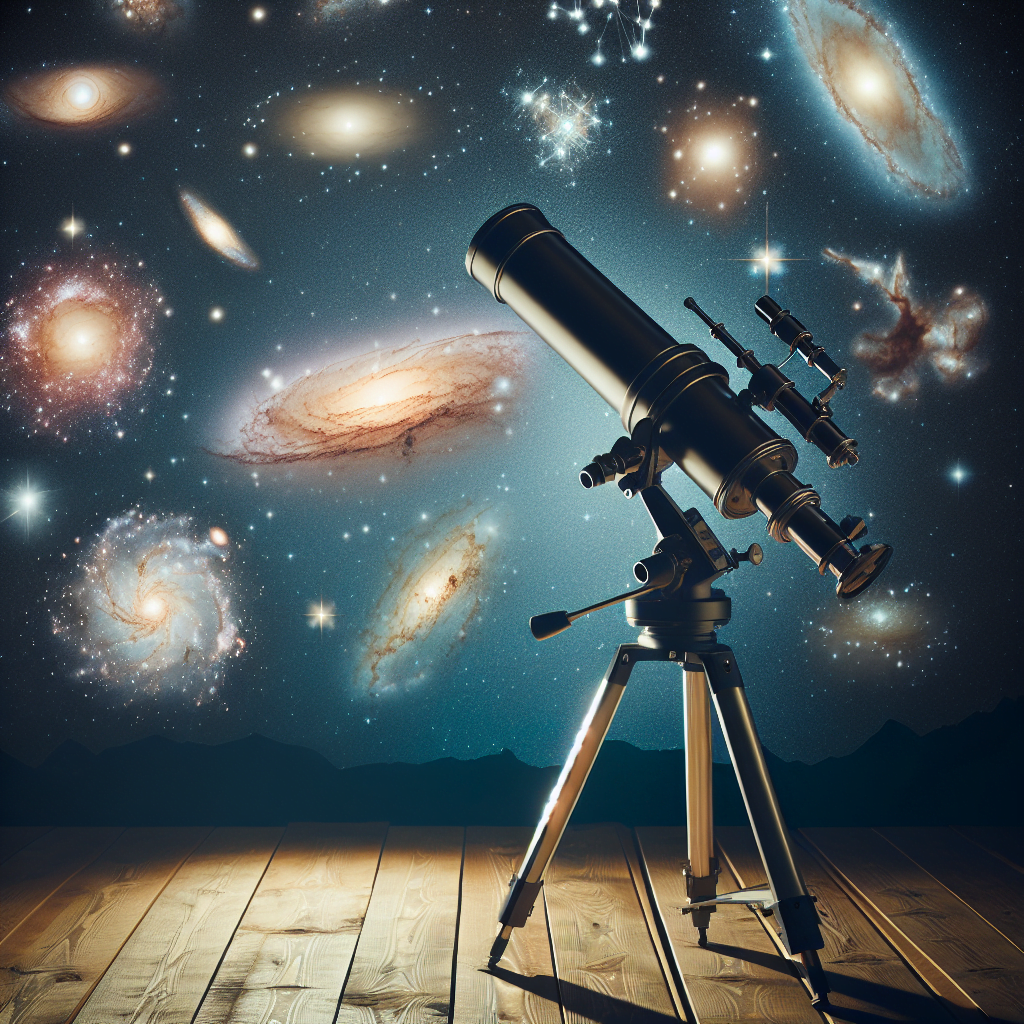Have you ever wondered if you can observe objects in the Messier catalog with a basic telescope? Well, the answer might surprise you! Although a basic telescope may not have all the fancy features of a more advanced one, it is still capable of providing you with breathtaking views of objects in the Messier catalog. So, if you’re a budding astronomer on a budget or just curious about what lies beyond our night sky, grab your basic telescope and prepare to be amazed!
Table of Contents
Introduction
Welcome! If you have a basic telescope and are eager to explore the wonders of the night sky, you may be wondering if it’s possible to observe objects in the Messier catalog. You’re in the right place! In this article, we’ll explore the fascinating world of the Messier catalog, understand the specifications of a basic telescope, learn techniques for observing these objects, and even delve into specific Messier objects. So grab your telescope and let’s embark on an unforgettable celestial journey!
What is the Messier Catalog?
Origin and Purpose
The Messier catalog, named after the French astronomer Charles Messier, is a list of celestial objects that are easily visible with telescopes. Charles Messier compiled this catalog in the 18th century to assist astronomers in their search for comets. The catalog consists of 110 objects, including galaxies, nebulae, star clusters, and more. While initially intended to aid in comet hunting, the Messier catalog quickly became a valuable resource for astronomers and amateur stargazers alike.
Types of Objects Included
The Messier catalog includes a diverse range of celestial objects. Some prominent examples are the Andromeda Galaxy (M31), the Orion Nebula (M42), the Crab Nebula (M1), the Ring Nebula (M57), and the Reflection Nebula (M78). These objects offer spectacular views and are often sought after by astronomers due to their unique characteristics and extraordinary beauty.
Messier Objects vs. Other Astronomical Catalogs
You might wonder how the Messier catalog differs from other astronomical catalogs. Unlike catalogs that focus on specific types of objects or specific regions of the sky, the Messier catalog is distinctive in that it encompasses a wide variety of astronomical objects spread throughout the celestial sphere. This makes it a fantastic starting point for beginners, as it offers a comprehensive overview of easily observable objects.

Basic Telescope Specifications
To observe objects in the Messier catalog, it’s essential to understand the basic specifications of your telescope. Let’s explore the key parameters:
Aperture Size
The aperture size refers to the diameter of the telescope’s main objective lens or primary mirror. It determines the amount of light the telescope can gather, which is crucial for observing faint celestial objects. Generally, the larger the aperture, the more detail you can see. For observing Messier objects, a telescope with a minimum aperture of 70mm is recommended.
Focal Length
The focal length is the distance between the telescope’s primary lens or mirror and the point where the light converges to form an image. It affects the magnification and field of view of your telescope. A longer focal length results in higher magnification and narrower field of view, making it ideal for observing smaller objects. A focal length in the range of 700-1000mm is suitable for observing objects in the Messier catalog.
Magnification
Magnification is calculated by dividing the telescope’s focal length by the focal length of the eyepiece being used. While higher magnification allows for closer views of objects, it is worth noting that excessively high magnification can lead to a loss of image quality and reduced brightness. For most Messier objects, a magnification of 20x to 50x should suffice.
Mount Type
The mount type plays a critical role in stabilizing your telescope and allowing smooth movement while observing. There are two primary mount types: alt-azimuth and equatorial. An alt-azimuth mount allows for simple up-down (altitude) and left-right (azimuth) movement, while an equatorial mount follows the rotation of the Earth. For longer observation sessions and tracking celestial objects, an equatorial mount is recommended.
Visibility of Messier Objects
Brightest Objects
The visibility of Messier objects largely depends on their brightness. Some objects, such as the Andromeda Galaxy (M31), can even be detected with the naked eye under dark skies. Others may require the aid of a telescope to appreciate their features. The brighter Messier objects can provide breathtaking views, even with a basic telescope, making them perfect targets for beginners.
Faint Objects
While the brighter Messier objects offer stunning views, there are also fainter objects in the catalog that may require darker skies and advanced observing techniques to fully appreciate. With a basic telescope, you can still detect and observe many of these objects, albeit with reduced levels of detail. Patience and persistence are key when it comes to observing the fainter Messier objects.
Contrast and Light Pollution
One challenge in observing Messier objects is the surrounding light pollution, which can hinder their visibility. Finding a dark observing location away from urban areas greatly enhances your chances of observing objects in the Messier catalog. Additionally, using light pollution filters can significantly improve contrast and reduce the impact of light pollution, allowing for clearer views of these celestial gems.
Location and Time of Observation
The location and time of observation are crucial factors. To optimize your chances of observing Messier objects, it’s recommended to plan your observing sessions during nights with clear skies and minimal atmospheric disturbances. The specific locations of objects in the Messier catalog vary throughout the year, so consulting star charts or utilizing smartphone apps can assist you in locating these objects during different seasons.

Preparing for Observation
Equipment Requirements
To observe objects in the Messier catalog, you’ll need a few essential pieces of equipment. In addition to a telescope, having a sturdy tripod or mount is crucial for stability. It’s also recommended to have a red LED flashlight to preserve night vision while setting up and adjusting your equipment. A comfortable chair or observing stool is a great addition, as it allows for extended observation sessions without strain.
Choosing the Right Eyepiece
Selecting the appropriate eyepiece is vital for achieving different magnifications and fields of view. Experimenting with different eyepieces will allow you to tailor your observing experience to suit the object you are observing. A good starting point is a low-power wide-angle eyepiece for locating objects, and a higher-power eyepiece for observing details on brighter objects.
Using Filters
Filters can be invaluable tools for enhancing the views of Messier objects. For example, a nebula filter can enhance the contrast of emission nebulae like the Orion Nebula, revealing intricate details that would otherwise remain hidden. Moon filters can also be useful when observing brighter objects during nights with a bright Moon. Investing in a set of filters expands your observing possibilities and enriches your experience.
Techniques for Observing Messier Objects
Finding Guides and Star Charts
Finding guides and star charts are invaluable resources for locating objects in the Messier catalog. These guides provide detailed maps of the night sky, indicating the positions of various objects. There are both printed and digital guides available, and using smartphone apps can make it even easier to navigate the sky. Familiarizing yourself with these resources will significantly enhance your ability to find and observe Messier objects.
Observing Moonless Nights
Observing Messier objects during moonless nights is particularly advantageous. The absence of the Moon’s glare allows for better visibility of faint objects and enhances the contrast between the objects and the background sky. Consult a lunar calendar to plan your observations during nights with little or no moonlight for optimal viewing conditions.
Averted Vision Technique
The averted vision technique is a useful tool for observing faint details in Messier objects. Instead of looking directly at the object, you slightly shift your gaze off to the side. This causes the light to fall on the more sensitive cells of your retina, enabling you to detect fainter details that might otherwise go unnoticed. When observing faint objects, experiment with averted vision to uncover hidden features.

Observing Specific Messier Objects
The Messier catalog is home to many awe-inspiring objects, each with its own unique characteristics. Let’s take a closer look at a selection of notable Messier objects:
M1 – The Crab Nebula
Located in the constellation Taurus, the Crab Nebula is the remains of a supernova explosion observed in 1054 A.D. It is known for its intricate filamentary structure and pulsar at its center. With a basic telescope, you can observe the nebula’s glowing gas and hints of its intricate details.
M31 – The Andromeda Galaxy
The Andromeda Galaxy, residing in the constellation Andromeda, is the nearest spiral galaxy to our Milky Way. Observable with the naked eye, it appears as a smudge of light. With a basic telescope, you can clearly discern its spiral structure and even spot some of its satellite galaxies.
M42 – The Orion Nebula
The Orion Nebula, located in the constellation Orion, is one of the most famous and visually stunning objects in the night sky. Known for its vivid emission and reflection clouds of gas and dust, it is easily visible to the naked eye. With a basic telescope, you can observe the nebula’s intricate detail, including the Trapezium Cluster at its core.
M57 – The Ring Nebula
The Ring Nebula, situated in the constellation Lyra, is a planetary nebula formed from a dying star. It appears as a donut-shaped ring of gas and is an extraordinary sight through a telescope. With a basic telescope, you can observe its distinct shape and even hints of its central white dwarf star.
M78 – Reflection Nebula
M78, residing in the constellation Orion, is a reflection nebula illuminated by young stars embedded within it. It appears as a faint patch of nebulosity and is a captivating sight through a telescope. With a basic telescope, you can observe its ethereal glow and appreciate its delicate structure.
Recording Your Observations
Sketching
Sketching the Messier objects can be a wonderful way to capture the experience and document your observations. Even if you’re not an experienced artist, a simple pencil sketch can help you remember the details you observed. Sketching also allows you to compare your observations over time and notice any changes in the objects.
Photographing
If you have a camera attachment for your telescope, capturing photographs of Messier objects is an option worth exploring. While more advanced equipment and techniques are usually required for pristine astrophotography, simple smartphone adapters can still yield impressive results. Photographing the objects allows you to share your experiences with others and deepen your appreciation for these celestial wonders.
Using Observation Logs
Maintaining an observation log is a fantastic way to track your progress and document your experiences. In your log, include details such as the date, time, weather conditions, equipment used, and your observations. Over time, this log becomes a valuable record of your journey through the Messier catalog and serves as a useful reference for future observations.

Advanced Techniques for Improved Observation
Collimation
Collimation is the process of aligning the optical elements of your telescope to ensure optimal performance. By ensuring your telescope is properly collimated, you can achieve sharper and clearer views of objects in the Messier catalog. Consult your telescope’s manual for instructions on how to collimate your specific model.
Dark Adaptation
Dark adaptation refers to the process by which your eyes become more sensitive to low light levels. To achieve optimal dark adaptation, avoid exposure to bright lights for at least 30 minutes before observing. This allows your eyes to adjust to the darkness, enabling you to detect fainter details in Messier objects.
Tracking and Guiding
For longer exposures or detailed observations, utilizing tracking and guiding mechanisms can be beneficial. Equatorial mounts equipped with motorized tracking capabilities allow your telescope to follow the rotation of the Earth, minimizing the apparent motion of objects. Autoguiding systems can further enhance accuracy by continuously adjusting the telescope’s position. These advanced techniques enable longer and more detailed observations of Messier objects.
Conclusion
Congratulations! You now have a comprehensive understanding of the Messier catalog, the specifications required for observing its objects, and various techniques to enhance your observing experience. Armed with a basic telescope and the knowledge gained from this article, you are well-prepared to embark on your adventure through the magnificent Messier objects. So don’t wait any longer – head outside, gaze up at the stars, and let the wonders of the Messier catalog unfold before your very eyes. Happy observing!

